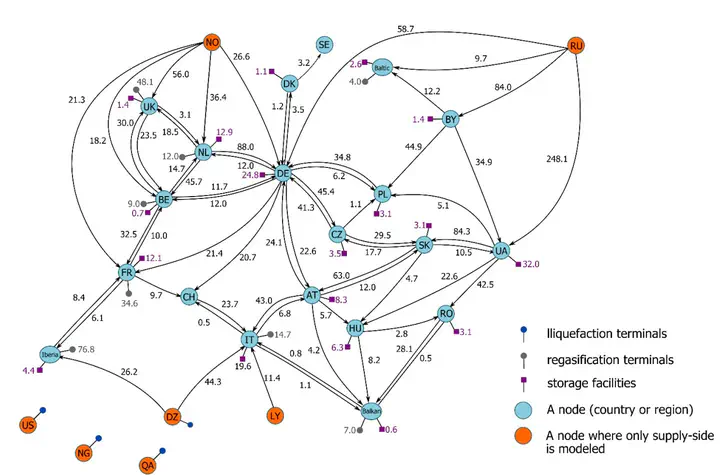
Abstract
The paper focuses on a seasonal demand swing in the European gas market. We quantify and compare the role of different flexibility options (domestic production, pipeline and LNG imports, and gas storages) in covering European demand fluctuations in monthly resolution. We contribute to the existing literature on seasonal flexibility by addressing the problem with a mathematical gas market optimization model. Our paper provides valuable empirical insights into the decline of gas production in northwestern Europe. Furthermore, we focus on how specific flexibility features differ between pipeline supplies and LNG supplies and between gas imports and storage dispatch. In terms of methodology, we construct a bottom-up market optimization model and publish the source code (which is uncommon for gas market models). Furthermore, we propose a new metric—the scaled coefficient of variation—to quantify the importance of supply sources for seasonal flexibility provision.